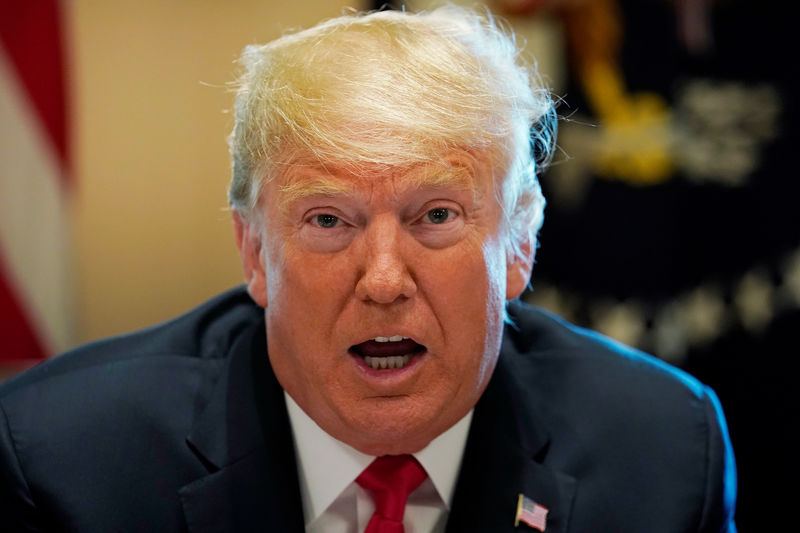(Bloomberg) -- The yuan’s slide to a decade-low is adding a new dimension to China’s balancing act: How to support the economy while avoiding a currency policy that widens its rift with the U.S. on trade.
The yuan steadied on Thursday when the People’s Bank of China set the daily reference rate higher than expected -- even though it was fixed at a level that’s weaker than 7 per dollar for the first time since 2008. That signals that traders are convinced that the yuan won’t be allowed to fall precipitously, even amid pressures from the trade war with the U.S. and slowing growth.
In theory, letting the currency fall without triggering panic allows the PBOC to ease policy as needed domestically. In practice, the labeling of China as a yuan “manipulator” by the U.S. this week -- and the surprise interest-rate cuts by global central banks -- means Beijing risks a global currency conflagration and even slimmer chances of a trade war resolution.
“The PBOC’s tolerance of a weak renminbi that is driven by market forces may result in an unintended consequence of a currency war by stealth,” said Chi Lo, a greater China senior economist at BNP Paribas (PA:BNPP) SA’s asset management arm, using the yuan’s official name. “If the tension escalates, it will throw anyone’s dollar-yuan forecast out of the window.”
The PBOC set its fixing basically in line with the market’s expectations on Friday.
Export Rebound
China’s export growth rebounded in July and imports shrank less than forecast, according to data released Thursday, showing that there had been some brighter signs for the economy before U.S. President Trump announced the addition of 10% tariffs to the remainder of Chinese imports to the U.S. last week.
The gloomy, and uncertain, outlook will make PBOC policy makers’ decisions about how best to support the nation’s slowing output with the exchange rate in mind more difficult. For some analysts, the central bank now has more room to act, whether that’s through outright interest rate cuts or more targeted, small-scale measures.
“The central bank was in a very difficult situation in the middle of last year -- you didn’t want the yuan to weaken significantly, but the economy was slowing and the Fed was raising interest rates. The PBOC was caught in between,” said Huang Yiping, a former adviser to the central bank. “This year so far, the room for monetary policy has expanded.”
Like any central bank, the PBOC will ultimately be steered by how much support or otherwise the domestic economy needs. The risks associated with that include a rush among companies and savers to get money out of the economy.
During a previous bout of yuan volatility over 2015 and 2016, China spent billions of its foreign reserves to support the currency. Since then the authorities have doubled down on strict rules around moving money out of the country that have helped control unwanted outflows.
China is already taking measures to rein in bets on depreciation. The nation is more capable of keeping the yuan stable now, compared with when it devalued the currency in August 2015, as the exchange rate is more flexible, PBOC adviser Ma Jun said in an interview with Financial News. This came after Yi Gang, the chief of the central bank, said earlier this week that Beijing wouldn’t use the yuan as a tool to deal with trade disputes.
Reserve Ratio
Since the beginning of 2018, the central bank has attempted to keep cash flowing to the economy without unduly pressuring the exchange rate by using cuts to the amount of money that banks have to hold aside, instead of broad-based reductions in the cost of borrowing.
Regardless, uncertainties over the yuan and trade war risk delaying a key reform of China’s interest rate framework that PBOC’s Yi hopes can make monetary policy more effective.
“The interest-rate reform will likely be delayed due to the yuan’s depreciation, as now the priority for policy makers is to limit risks of capital outflows with macro-prudential measures,” said Xing Zhaopeng, a markets economist at ANZ Bank China Co.
It could also impact economists’ forecasts for the central bank to lower interbank borrowing costs by the end of September. The weaker yuan may postpone that.
“We think Chinese policies will become incrementally easier but a large new stimulus remains unlikely in the near future,” Wang Tao, chief China economist at UBS AG in Hong Kong, wrote in a note. She expects the PBOC to continue to cut reserve ratios and ease funding for infrastructure in the coming months.
“I think the PBOC will go for stability, but ultimately your guess is as good as mine,” said Mingze Wu, a foreign-exchange trader at INTL FCStone in Singapore.
(Adds Friday’s fixing in 5th paragraph, adds comments from Ma Jun and Yi Gang.)
